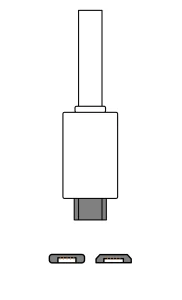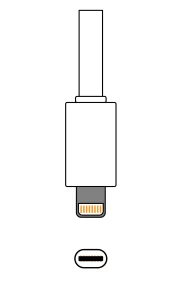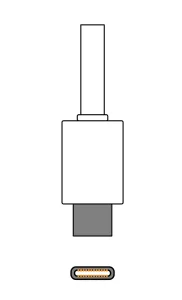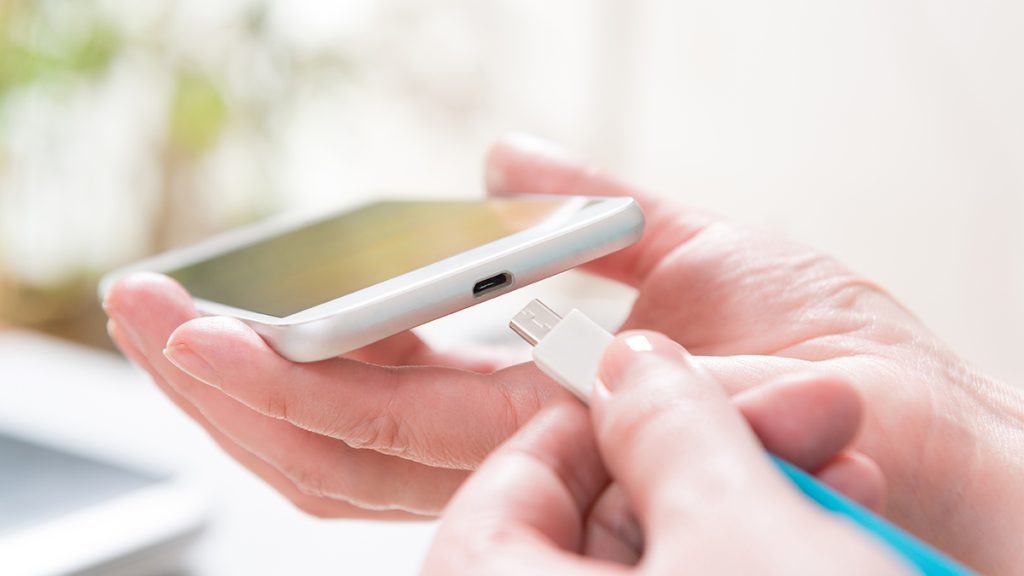There’s no denying how much we’ve come to rely on our mobile devices such as smartphones, tablets, gadgets like smartwatches and laptops to accomplish our daily work — especially in this remote age. And our reliance on these convenient digital tools is only expected to increase. According to IoT Analysis Research conducted in 2018, the global number of connected devices is projected to grow from 11.6 billion this year to 21.5 billion by 2025. Our next greatest challenge will be keeping all these devices powered and ready to work when we are. This month’s blog article is dedicated to the current state of charging and more importantly, the future of power as it relates to charging your work tools.
How Devices Connect
As of this writing, there are three main methods our devices use to connect to a power source or transfer data: Micro USB, Lightning and USB-C:

Micro USB
Micro USB was originally designed as the thinnest connector with the intention to allow electronics manufacturers to design their products with slimmer profiles. This type of connection is featured mainly on accessories such as wireless earphones, smartwatch chargers, Bluetooth peripherals and the like.
Micro USB features an asymmetrical pin formation, meaning there’s only one way the connector can insert into the port correctly. Attempting to insert the plug upside down can easily result in damage to the thin metal construction of the plug and ports if inserted incorrectly. Because of this, and the advent of better options, the Micro USB connector is being phased out by most device manufacturers.

Lightning Connector
The Lightning connector was created by Apple as a proprietary alternative to the Micro USB and is found exclusively on their products. It features a more durable construction and symmetrical pin design — so there’s no wrong way to plug the cable into devices. Lightning connections are featured on Apple devices such as iPhones, iPads, iPods, and accessories.

USB-C
This most recent and most prolific entry, USB-C is quickly becoming the industry standard for data transfer and connecting devices to power. USB-C features a symmetrical pin design, allowing it to plug in from either direction, making it more durable and convenient to use.
USB-C connectors are rated for higher current levels than previous generations, meaning they can deliver significantly more power and thus, charge larger devices (like laptops) — up to 100W, compared to 5-10W of previous generations.
Power Delivery to Devices
Now that we’ve covered the main options for connecting your hardware, let’s turn our attention to the other end of the cable and look at the most efficient ways to keep your devices charged and ready at your workstation.
- Wall outlets. The most common and logical way is to plug your device directly into a wall outlet. This of course requires a power adapter to manage the transfer of AC power coming from the wall into usable DC power the device requires. Power adapters historically have been included with the purchase of any device, but this may be no longer. In an effort to conserve on waste, Apple and other manufacturers are in the process of phasing out the inclusion of the power cubes that have traditionally been found in the box along with their phones, requiring you to use a legacy power adapter from one of their other products or having to purchase one separately. AC wall outlets are also quickly relegated to larger hardware that requires power to get your work done, namely PCs, display monitors, lighting, etc., so dedicating one of these receptacles to charge any one of your several devices comes at a premium. Also worth considering is the use of a wall outlet requires you to be, well, tethered to the wall by the length of your cable. So much for having freedom in where you choose to do your work.
- USB ports Increasingly, USB ports are being included in many of the items you find on your desk. PC’s and laptops have them of course, but now you are starting to see more of them built into desktop companions such as lighting fixtures, keyboards, and add-on power distribution units that can be attached to the worksurface. This application gives you freedom from the wall but can come at the expense of speed in charging–especially when charging a larger device that requires more amps (such as a tablet). For example, a common USB-A port built into a laptop can offer power at a rate of .5A or 1A, but a tablet requires 2A or more to charge. While the tablet will eventually reach a full charge using this port, it will take much longer than it would if plugged into a wall outlet that can offer the 2A it needs. Long story short, if relying on USB ports to provide power to charge devices, pay attention to the specifications of the Amps it offers to ensure the most efficient charging time.
- USB-C PD The newest kid on the power protocol block is USB-C PD, which stands for Power Delivery. USB-C PD negotiates with the device to deliver the proper Voltage/Current pairing that a device wants — up to 100W, meaning it can power larger devices fast, such as laptops without the use of a power adapter. USB-C PD ports are also symmetrically built for conveniently plugging into from either direction. Even more exciting is that the power in a PD port flows in both directions — making it possible to provide power to devices not only from larger to smaller ones, but from small to larger ones as well (think using an iPhone to power a hard drive). USB-C PD ports are just starting to gain popularity and can be found built into laptops and contained in freestanding power banks. Note that USB-C ports can exist without the PD protocol, and often cap out at 15W maximums, so be sure to check the specifications to ensure the port meets with your power expectations.
Meeting Today’s Expectations for Desktop Power
So that is a very brief look at your options for keeping your hungry devices charged and ready as well as some changes ahead for this technology in the near future. In summary, we know that as our reliance on connected devices continues to grow, our demand for AC and USB power options will only increase. Until manufacturers can settle upon a universal way to connect, and while you still have an arsenal of legacy products, you’re going to require diversity within the power protocols available to you.
If you’re in the market for a truly flexible and highly customizable power solution that provides diversity in power protocols, consider LightCorp’s latest endeavor, Nik. The Nik power distribution unit attaches under or clamps to your work surface offering both AC and USB power, giving you maximum flexibility to power the devices you have today. Nik offers not only the typical 1.5A USB charging port but includes a fast-charging 2.4A port for quicker recharges and features over-current protection to extend the life of your devices. And new this summer, we’re excited to add 60W USB-C PD ports within Nik’s capabilities — all contained within its highly customizable aesthetic housing. For more information, please visit LightCorp.com.

